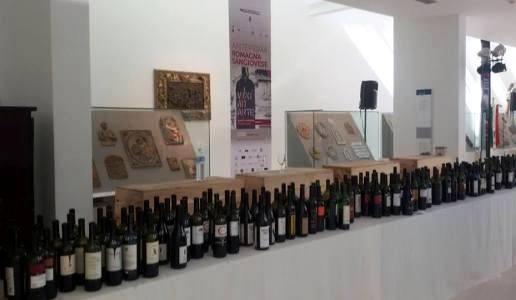What future for Romagna?

The Vini ad Arte 2018 preview confirmed how Romagna Sangiovese stands out for its overall good quality offered at very interesting prices, wines distinguished by their freshness, salinity and distinct fruit.
The latest edition of the preview of Romagna wines Vini ad Arte (Taylor-made Wines), held in Faenza last February, included two key conferences. The first focused on foreign markets and was for the most part reserved for producers. The second was very interesting thanks to the great experience of those called on to speak. On stage to answer the questions of the director of the Consorzio Vini di Romagna producers’ association, Filiberto Mazzanti, were three authoritative enologists who have worked both in Tuscany and Romagna: Vittorio Fiore, who now also owns an estate in Romagna, Maurizo Castelli and Franco Bernabei.
One of the more interesting topics focused on how Romagna Sanviovese was a wine with a good overall quality offered at a very interesting price and distinguished by its freshness, salinity and distinct fruit. Producers were urged not only to work more as a team in order to tackle foreign markets together but to offer international markets their best products in order to draw greater attention to the appellation and give a positive vision of the wine’s propensity to age. The suggestion was a good one but came too late for the disastrous retrospective tasting offered at last year’s event that turned off several foreign buyers who did not return this year.
Another very interesting moment of the event was the address by Francesco Bordini, seen by some as the “Savior of Romagna Sangiovese” after last year’s tasting. He focused on territories and zones with a bold approach: not only to begin phase 2 of the shift towards indicating the town the wine was made but also the soils-terroirs than can be found in these towns. In support of this argument were the results of research carried out by various estates together with an important geological study. A revolutionary proposal was made to no longer subdivide the areas according to municipalities but according to a series of terroirs that run more or less parallel to town borders and have uniform geological compositions. In other words, establish a more natural order as opposed to a political one. By doing this the ‘reading’ of wines could be much more intuitive.
My personal opinion is that Romagna should move forward in two directions. The first centers on Sangiovese and Albana, a versatile varietal that can be made into different wines, while the second would be more focused on the domestic market with the recovery of some interesting and promising varietals like Centesimino and Pignoletto both of which, if made treated well, have an almost unique aroma.
This year’s tasting further confirmed the enormous potential of Sangiovese vintage 2015 that now needs just a little more bottle aging to allow its drinkability and significant complexity to come out as well as its propensity to age. Vintage 2016 was also very fragrant with some truly enticing Sangiovese products. Albana 2016 is already good now and will be for some time, while Albana 2017 was too new to pass any judgements and some were even barrels samplings.
Last but not least, the organization deserved a round of applause and as always the tasting rooms in the brightly lit and perfect cellars of the Museum of Ceramics were wonderful, while the local sommeliers were quick and efficient. The following are three wines that impressed us.

 Italiano
Italiano
















